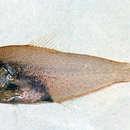en
names in breadcrumbs


Parapriacanthus is a genus of sweepers native to the Indian Ocean and the western Pacific Ocean.[2] Parapriacanthus are bioluminescent, with ventral light organs for counter-illumination. Parapriacanthus luciferase is a kleptoprotein, obtained from their diet on bioluminescent ostracods.[3]
There are currently 11 recognized species in this genus:
Parapriacanthus is a genus of sweepers native to the Indian Ocean and the western Pacific Ocean. Parapriacanthus are bioluminescent, with ventral light organs for counter-illumination. Parapriacanthus luciferase is a kleptoprotein, obtained from their diet on bioluminescent ostracods.